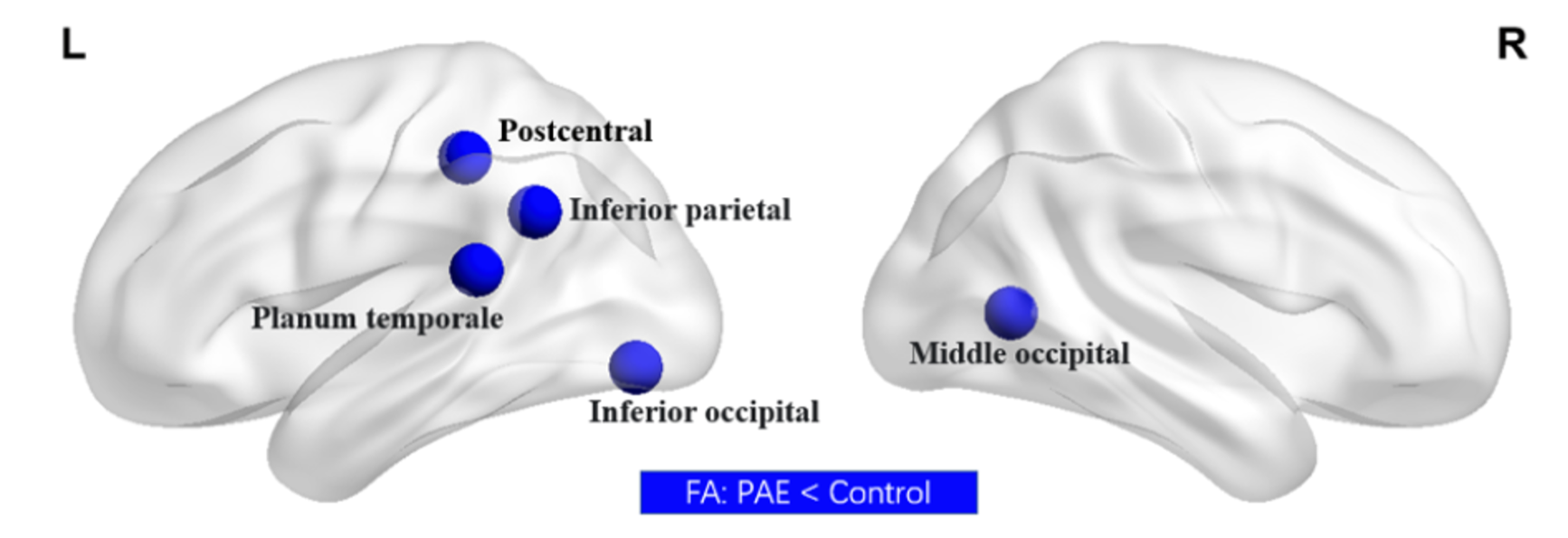Written by: Catherine Label and Xiangyu Long
This is a summary of a recent article titled, Evaluation of Brain Alterations and Behavior in Children with Low Levels of Prenatal Alcohol Exposure.
Background
Heavy prenatal alcohol exposure (PAE) can affect children’s development. For example, heavy PAE is related to problems with behaviour and learning, which are likely caused by changes to the brain. However, we do not know much about how lower amounts of PAE affect children’s brains. In this study, we used magnetic resonance imaging (MRI) to measure brain structure and function in children with low levels of PAE.
We compared two groups of 10-year-old children: 135 children with low levels of PAE (1 drink/week on average) to 135 children with no PAE. Both groups were otherwise similar in sex, age, family income etc. We focused on comparisons of brain connectivity, measured by MRI and explored how it related to parent reports of children’s behaviour. Data came from the Adolescent Brain Cognitive Development (ABCD) study, which was conducted at several places across the United States.
Main Findings
Compared with the children without PAE, we found that children with PAE showed:
- Worse externalizing behaviour (behaviour directed outward, such as aggression or hyperactivity).
- Weaker brain connectivity in white matter, including areas responsible for motor and visual function.
In children without PAE, stronger brain connectivity was related to less problematic behaviour. But this relationship was not found in children with PAE.
This figure shows the brain areas where children with PAE had weaker brain connectivity (lower values of fractional anisotropy/FA) than children without PAE. These brain areas are involved in things like motor function and visual processing.
Implications
This is the first evidence of brain changes in children with low levels of PAE. Our results show brain and behaviour changes in children with low levels of PAE (average=1 drink/week) compared to a group of children without PAE. This data supports the recommendations from the Centers for Disease Control and Prevention(CDC) and the Society of Obstetricians and Gynaecologists of Canada that there is no safe amount of alcohol use during pregnancy.
Understanding low levels of PAE is important to make evidence-informed policy recommendations and provide appropriate supports for indivudals throughout pregnancy, as well as children with PAE and their families.
More research is needed to better understand how low levels of PAE affect children’s brains and behaviour. Studies that measure children’s brains and behaviour at multiple time points during development will be especially valuable.
Authors: Xiangyu Long, Catherine Lebel
Journal: JAMA Network Open
Date: April 2022
Read the full article (available open access)

Ziangyu Long

Catherine Lebel

